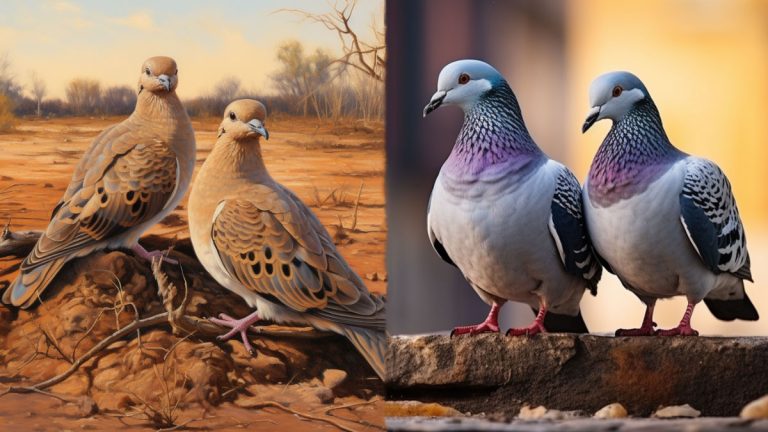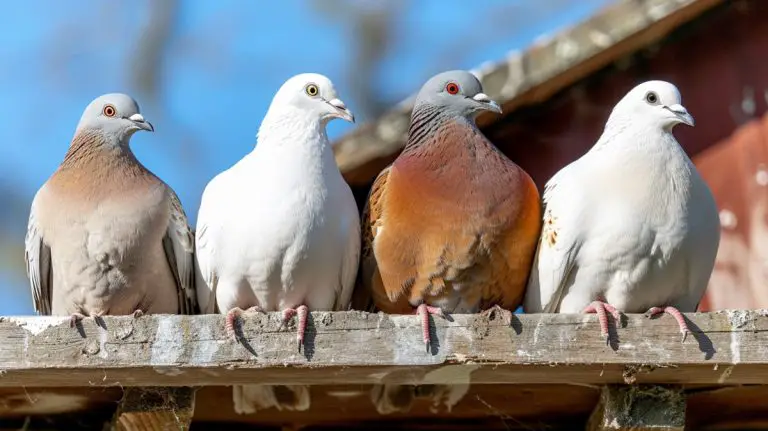How Long Can a Pigeon Fly Without Stopping?
Pigeons are known to be incredible flyers that can take to the skies at high speeds. Moreover, they have remarkable endurance, which enables them to stay in the air for many hours. But exactly how long can these birds fly without stopping or taking a rest? This is what we’ll discuss in this guide.
How long can a pigeon fly without stopping? A pigeon can fly for up to 13 hours without stopping and can cover hundreds of miles a day without stopping. However, the length of flight these birds can cover continually depends on several factors such as the pigeon breed, environmental conditions, health, age, flight purpose, training, and flying experience.
This article will discuss more details about how long pigeons can fly continuously without resting. We’ll also discuss how far they can go without stopping, what enables these birds to undertake such endurance flights, and other helpful information you need to know.
How Long Can a Pigeon Fly Without Stopping?
A healthy and well-trained pigeon can fly without stopping for up to 13 hours. During this time, the bird can cover a distance of hundreds of miles (400 to 800 miles or more).
You’ll find that an average pigeon flies between 400 and 800 km while an excellent homing or racing pigeon may cover even farther distances of up to 1800 km.
Other pigeons are barely able to sustain their flight for long hours as they may get tired easily and make stops.
Some other birds like the tippler pigeons are known to stay airborne without stopping for exceptionally long hours. The record held by these types of pigeons is up to 22 hours! (Source).
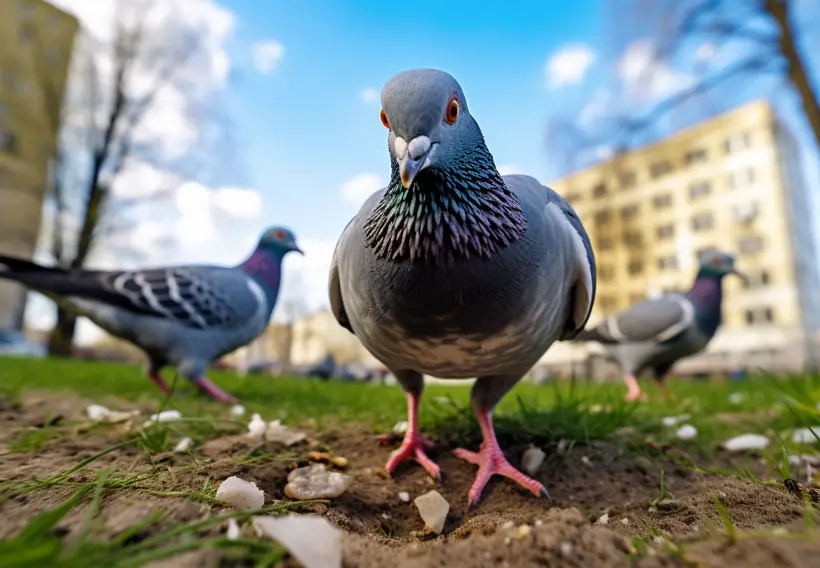
For the pigeons (racing pigeons) that are capable of staying airborne for long and covering great distances, the secret lies in their remarkable endurance.
These birds usually undergo rigorous training for speed and endurance, so flying long distances without stopping becomes easily manageable for them.
For this reason, the pigeons are used in competitions that involve covering long distances. In such events, they fly for long hours on end and cover hundreds of miles, and eventually return to their lofts the same day.
However, non-racing pigeons, e.g. the common city pigeons, are unable to undertake flights that have the same magnitude as the racing pigeons.
These birds usually engage in shorter flights that only last anywhere from a few minutes to several hours.
What Factors Affect a Pigeon’s Ability to Fly without Stopping?

The duration a pigeon can fly non-stop for many hours usually comes down to several factors that we have listed below:
- Breed: Different pigeon breeds have varying flight capabilities. For instance, racing pigeons that are selectively bred and trained for speed and endurance can easily cover longer distances without stopping.
- Age and health: Young and healthy pigeons usually have better endurance and can stay airborne for hours compared to old and ailing birds.
- Weather conditions: Weather conditions also significantly affect how long a pigeon can fly without stopping. Strong winds and adverse weather can drastically affect their flight capabilities. On the other hand, favorable weather such as tailwinds can enable these birds to cover long distances without stopping.
- Energy reserves: The higher the amount of energy reserves a pigeon has, the longer it’s likely to fly without stopping.
- Flight purpose: Racing homing pigeons, which are motivated to quickly complete long flights and go back to their lofts, will cover longer distances compared to pigeons flying in search of food.
How are Pigeons able to Fly for Long Hours Without Stopping?
To understand how pigeons can fly non-stop for extended hours, you will need to understand their physiological adaptations for flying.
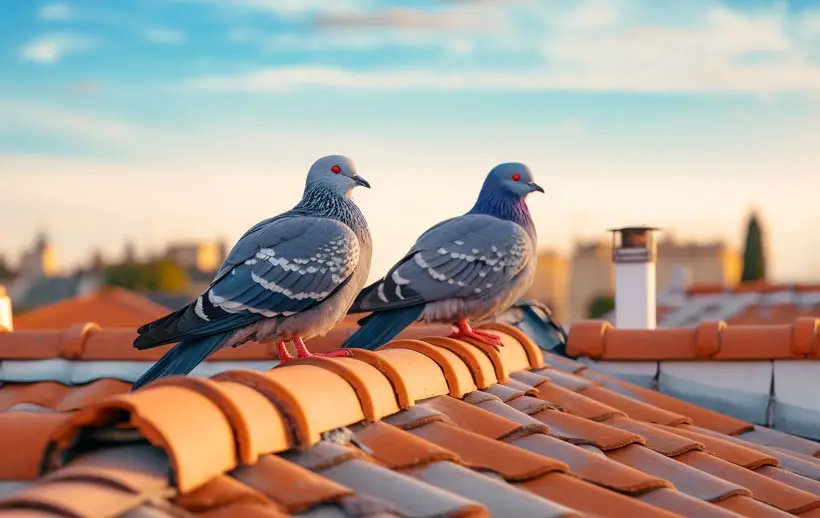
Here are some key characteristics that enable these birds well suited for long and continuous flights:
- Efficient respiratory system: This promotes a steady intake of oxygen during flight, which is crucial for the bird’s sustained endurance.
- Streamlined body: The birds also feature a streamlined (aerodynamic) body shape, which further contributes to efficient flying and sustained long flights.
- Powerful flight muscles: Pigeons also feature strong, well-developed pectoral muscles or flight muscles, which enable them to continually flap for long periods of time.
- Fat reserves: These birds also store energy in the form of fats that are then metabolized during extended flights to provide them with the necessary fuel to keep them going.
Don’t forget that homing and racing pigeons generally possess an impressive ability to navigate. This helps minimize their chances of getting lost during extended flights.
The rigorous training that these birds undergo for speed and endurance also enables them to stay airborne for long hours without making a stop.
How Long can a Pigeon Fly without Stopping at Night?
Pigeons are generally diurnal birds, so their preferred flying hours are during the day. However, they can fly over short distances if necessary.
At night, these birds have poor night vision and may struggle to fly in the dark.
Moreover, they’re easily vulnerable to predators. Their primary source of food—grains and seeds—is also not accessible at night.

If a pigeon flies at nighttime, it may be due to essential activities such as evading a threat or finding its way back to the roast.
The same applies to racing birds or domesticated pigeons in general. They are also primary, diurnal, and not known to make extensive flights at night.
In racing competitions, the pigeons are usually released during the day to ensure they safely and accurately return to their lofts.
Night flights for these pigeons aren’t a common practice and have never been made the primary focus of their racing capabilities.
How do you Make Pigeons Fly Longer?
The first thing to make a pigeon fly longer without stopping is to feed it with proper nutrition.
Ensure your birds get a balanced diet that contains all the essential nutrients, including protein and fats, to provide them with the necessary fuel for extended flights.
Training is also key in helping your pigeons fly non-stop for long hours. Gradually increase the flight distance during your flock training sessions to help the birds build their endurance.
Also, maintaining a consistent flying schedule will help condition your birds for longer flights.
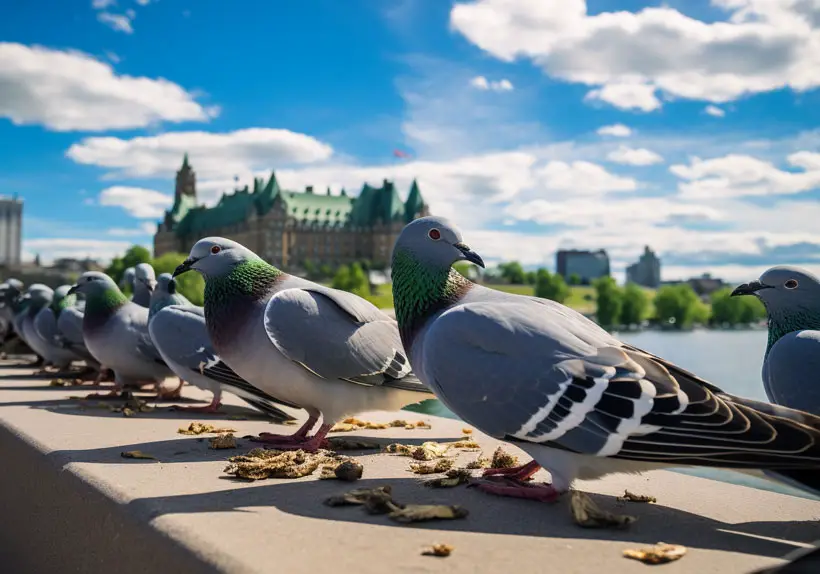
During the training sessions, try exposing your pigeons to different weather conditions gradually, including temperature, wind speeds, weather patterns, etc.
This will enable them to develop the necessary adaptation for flying efficiently in different environments.
Experience also counts, as the older pigeons usually possess better endurance than their younger counterparts do.
Keeping your birds in a good loft will ensure they stay healthy which adds to their ability to stay in the air for hours.
Conclusion
Pigeons are remarkable birds with exceptional flying capabilities and endurance, which enable them to fly non-stop for many hours. The average length of time these birds can stay airborne is up to 13 hours. However, the exact period of time will vary depending on several factors such as breed, weather, health, and age of the individual pigeons.
The ability of pigeons to engage in hours of non-stop flights is linked to their physiological adaptations such as strong flight muscles, streamlined body shape, efficient respiratory system, and fat reserves that provide them with the necessary energy. Proper training of the racing pigeons and the experience that comes with flight also enables them to develop endurance over time and make hours of non-stop flights.
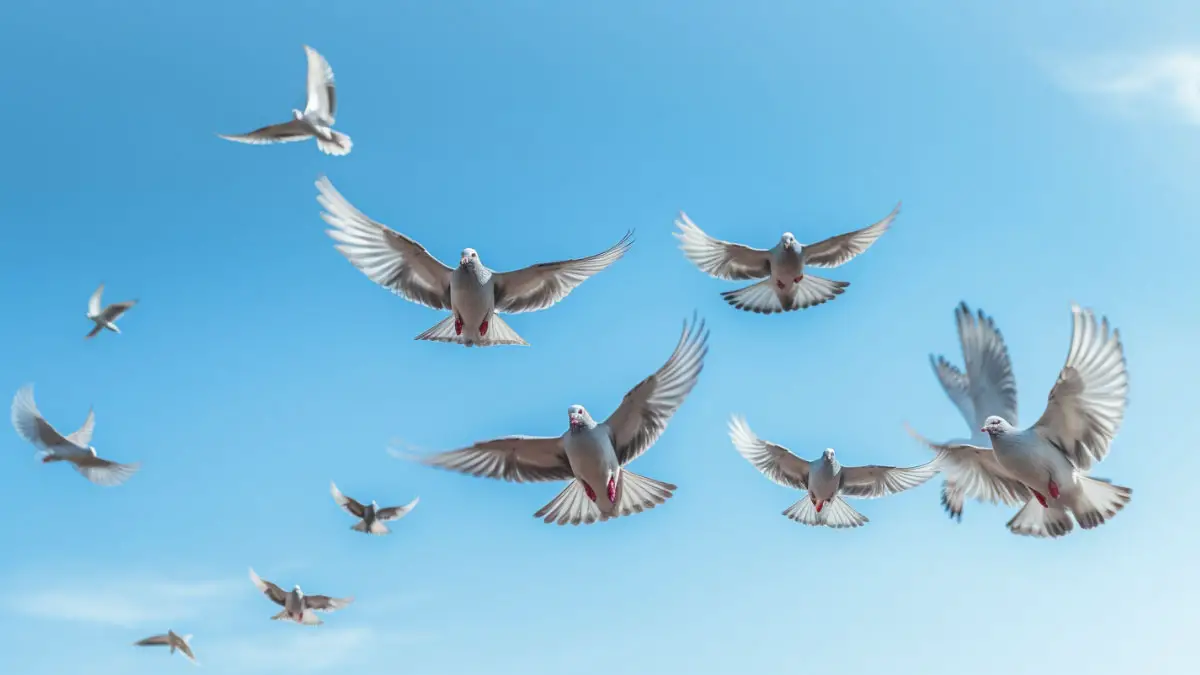
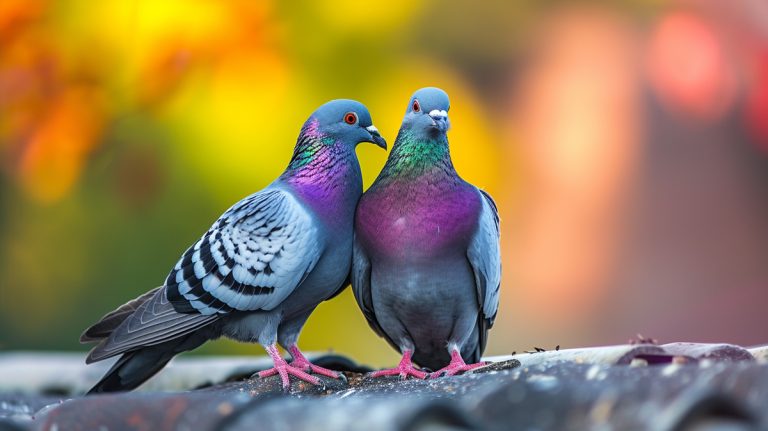
![Do Pigeons Eat Mice? [Everything You Need To Know]](https://avicultureblog.com/wp-content/uploads/2023/01/Do-Pigeons-Eat-Mice.jpg)


